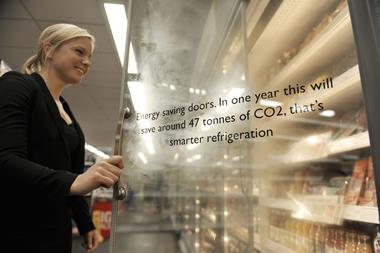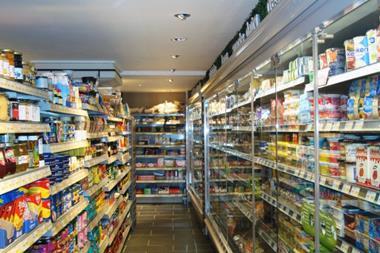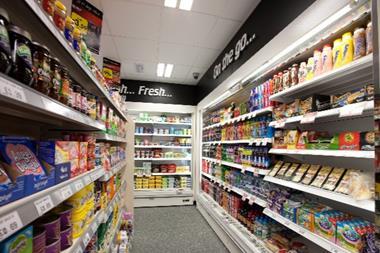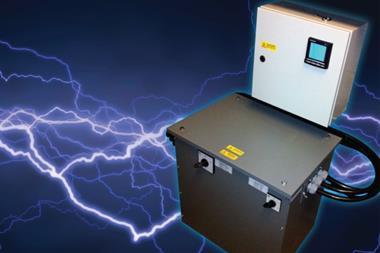Winning a free energy audit courtesy of C-Store and Npower means Peter Barrack can shave more than £2,500 off annual energy bills at his store. Read on for the changes that can make such a difference to his outgoings
Barrack News and Post Office, Tattershall, Lincolnshire
Size: 1,100 sq ft
Established: 1963
Electricity: 67,051 kWh day rate consumption, 23,328 kWh night rate consumption.
Annual electricity bill: £9,068.71

With local competition hotting up following the recent opening of an 8,000sq ft Co-op supermarket immediately next to his store, long-serving independent retailer Peter Barrack was keen to discover how he could rein-in costs and preserve his precious margins. Fortunately, as one of the lucky victors of a recent C-Store and Npower competition to win a free energy audit, he is now in possession of a detailed action plan of simple, cost-effective changes to help him cut his annual energy bill by almost a quarter.
In total, annual energy savings of 24.7%, equivalent to £2,537, were identified by Npower’s energy efficiency expert Andrew Fletcher, much to Peter’s delight. “While we are constantly looking to update our ranges and offer items that the competition can’t or doesn’t in order to boost footfall and sales, saving money where we can is becoming increasingly important,” Peter (pictured right) told C-Store. “Energy consumption is one area where there are significant savings to be made and, as the audit shows, the changes don’t all have to cost the earth.”
Making the changes, many of which relate to improving the store’s 20-year-old internal lighting system and ventilation, is estimated to cost about £7,000, resulting in a payback period of just over two-and-a-half years.
Internal lighting
Implementation cost: £1,154
Estimated annual energy saving: £334

Lighting currently accounts for 10,251kWh of the store’s annual electrical consumption, costing £1,158.42, a figure which could be slashed were Peter to replace the store’s current 100W single-batten, magnetic ballast fluorescent light fittings and lamps with more efficient alternatives. Andrew decided against ultra energy-efficient LED lighting as the more costly outlay would extend the payback period significantly. Installing LED lighting would also require constructing a suspended ceiling containing LED panel lights, costing more. For this reason, Andrew recommended fitting 1,800mm T8 high-frequency, single-batten fittings, with lamps rated at 70W.
“We recommend 70W lamps in place of 58W lamps in order to enhance the current lighting level and uniformity within the store,” Andrew explains. For the stock room he recommended replacing the single-batten fittings with 28W high-frequency, slimline, surface-mounted 2D fittings.
Voltage optimisation
Implementation cost: £3,111
Estimated annual energy saving: £635

With about 70% of the store’s electrical consumption coming from voltage-dependent equipment, and voltage levels running at about 238 volts, the benefits of reducing supply voltage to about 220 volts were found to be notable.
In addition to yielding electricity consumption savings of about 7% from voltage-dependent equipment such as ovens and computers, voltage optimisation would also reduce the risk of the store overloading its existing electrical supply, an occurrence which can happen on busy mornings when the demand for hot food and drinks to take away peaks.
Chiller management
Implementation cost: £340
Estimated annual energy saving: £460

Changes to the way in which Peter’s store manages its two drinks chillers could have a significant impact on the store’s overall energy usage. While each refrigerator uses a thermal night blind once the shop is closed, Andrew believes their effectiveness is limited, and fitting glass-fronted chiller doors would be too costly. Instead, Andrew suggested fitting a PIR controlled energyMiser unit on each refrigerator. This clever little gismo, which can be easily fitted inside the chillers, allows non-perishable drinks chillers to be switched off once the store is closed and their compression cycles have ended. (Manually switching off a chiller before its compression cycle has ended can damage equipment)
Preliminary assessment reveals savings of about 30% against current energy consumption levels by each refrigerator.
Hot water
Implementation cost: £110
Estimated annual energy saving: £183

A 145ltr Heatrae Sadia Megaflow direct hot water storage cylinder provides hot water for the front of store food-to-go preparation area. The water is heated via a 3kW electric immersion heater within the cylinder, which is left on throughout the day. Andrew recommended installing a timeclock control for the hot water cylinder, incorporating a boost function to enable most of the hot water requirement to be met using off-peak electricity at a cost of 6.38p/kWh (a 44% cost reduction).
Stock room and shop floor ventilation
Implementation cost: £2,400
Estimated annual energy saving: £725

Waste heat being generated by the store’s stock room and shop floor chillers and freezers, in addition to its food-to-go ovens, was found to be placing its refrigeration and air-conditioning equipment under strain and creating a warm interior. While Peter has tried to mitigate this problem by leaving the store’s front and rear doors open, Andrew suggested installing localised heat extraction fans and canopies. He also advocated that a transfer grille be installed within the stock room door to enable warm air at the rear to be drawn out of the building via the stock room’s freezer extractor fan when the door was closed. Two fresh-air inlet, temperature-controlled through-wall fans should also be fitted within the store’s front elevation to draw fresh air into the building and replace warm air extracted from heat-emitting appliances.
Further pointers

As a final note Andrew also recommended that all of the store’s and post office’s 14 computers, most of which are more than 10 years old, be switched off at the end of the working day. “With typical energy consumption for equipment of this age estimated at £70 per annum, if left on 24-hours per day annual savings of 25% per computer should be achievable,” he said.
Andrew advised Peter to ensure he only selected high-efficiency replacements (A+ and A++ equivalent). “Modern energy-efficient appliances will be 15-20% more energy efficient than the current equipment installed,” he added.
Npower is encouraging retailers to hunt out the hidden savings in their stores
Retailers could be saving themselves more than £3,000 a year by making small changes to their energy efficiency, according to energy supplier Npower.
The company uncovered the potential savings as part of its ongoing work to help small businesses turn the spotlight on how much money they could save, unearthing simple ways to use less energy. The findings come from a programme of energy-saving audits conducted at real businesses, including Perry Park Stores in Birmingham.
The energy-saving audit used the business’ average annual expenditure on energy to reveal approximate energy savings including:
• £1,152 from implementing voltage optimisation
• £1,000 from increasing staff awareness of energy consumption and implementing real-time energy monitoring
• £600 from air-conditioning maintenance and changes to temperature set points
• £184 from lighting improvements
• £150 from lighting occupancy control
• £62 from fitting blinds to open-fronted fridges and chillers.
SME sales and marketing director for Npower Phil Scholes commented: “We know many retailers are busy with the day-to-day operation of their stores, so we work in partnership with them to help identify where energy savings can easily be made. Our energy-saving audits show just how many hidden savings there are within businesses and how these can add up to significant sums of money.
“We’d encourage any retailers looking for help on how they can save to contact us for advice.”
For more information on finding the hidden savings in a business, visit www.npower.com/businessenergysaving






















No comments yet